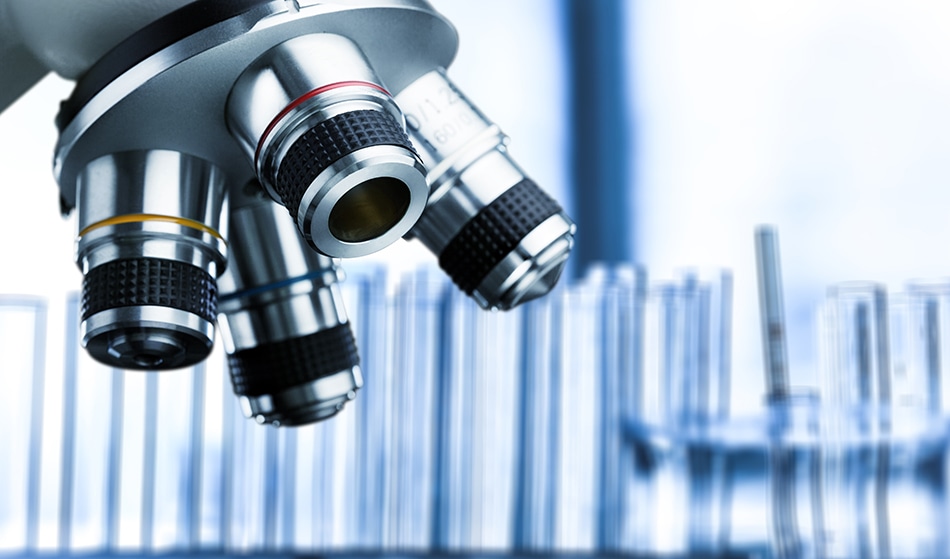 Billion Photos/shutterstock
Billion Photos/shutterstock
Using quantum switches, physicists from the Ruhr-Universität Bochum (RUB) and the University of Basel have succeeded in beating the current resolution for microscopic analysis of solid state system to 1/31 - around 30 nanometres - of the wavelength of the utilised light.
Light microscopy can help scientists visualize miniscule structures – but the technique isn't without limitations. Objects with dimensions smaller than half the wavelength of the utilised light are difficult to view because diffraction phenomena begin to interfere. Objects that are less than several 100 nanometres apart can no longer be viewed as separate entities, and instead the image becomes fuzzy and blurred.
While near-field scanning optical microscopy bypasses this problem by making used of the scattered light of a very small object at the surface to create an image, if the object is embedded inside a solid object, it is subject to limitations.
This so-called Abbe diffraction limit was first circumvented by Stefan Hell, who won the Nobel Prize for Chemistry for his work in 2014. He used several laser pulses and fluorescent molecules which can be switched on and off, making it possible to achieve a resolution of object details of biological samples that was ten times better than before.
Researchers from RUB have successfully built on this work, translating the principle into a solid state system with artificial atoms, so-called quantum dots. Quantum dots are semiconductor particles that are only approximately ten nanometres in size in which just a single electron can be confined. Due to their small dimensions, these electrons can only sit within specific energy levels – similar to atoms where electrons are arranged in specific shells.
In Hell's work, it was necessary to switch the fluorescent molecules to a long-lasting metastable dark state.“We, however, avoided this on purpose by analysing a short state in the quantum dots that lasted only one nanosecond,” explains Dr Arne Ludwig, Chair for Applied Solid State Physics in the Faculty of Physics and Astronomy at RUB.
To do this, the team developed an optical switch to control artificial atoms on the quantum level. They utilised a specific laser pulse called a chirped laser pulse - namely short pulses with changing frequency, similar to the chirping of birds but on a time scale approximately a hundred billion times shorter.
They were therefore able to initiate a so-called rapid adiabatic passage – in other words a tool for inverting the energy level of electrons in quantum dots in a controlled manner. As a result, they had a control switch on the quantum level capable of turning the electrons on and off, in the palm of their hands. The resolution they attained equalled 1/31 of the wavelength of the utilised light.
The quantum dots – developed by Ludwig and Sacha Valentin from Andreas Wieck's group at RUB - had to be embedded in a special semiconductor crystal matrix to ensure that individual photons were available for microscopy at an adequately high rate.
With this new technique we have developed a method for applying quantum switches – even without metastable states – in microscopy. This takes Stefan Hell’s microscopy approach to the next level. It is thus possible to conduct nanoscale analyses for almost every quantum system.
Professor Dr Richard Warburton, University of Basel
Furthermore, the switch is just that – a control element on the nano level and therefore a crucial marker towards using artificial atoms as quantum information units.
Disclaimer: The views expressed here are those of the author expressed in their private capacity and do not necessarily represent the views of AZoM.com Limited T/A AZoNetwork the owner and operator of this website. This disclaimer forms part of the Terms and conditions of use of this website.